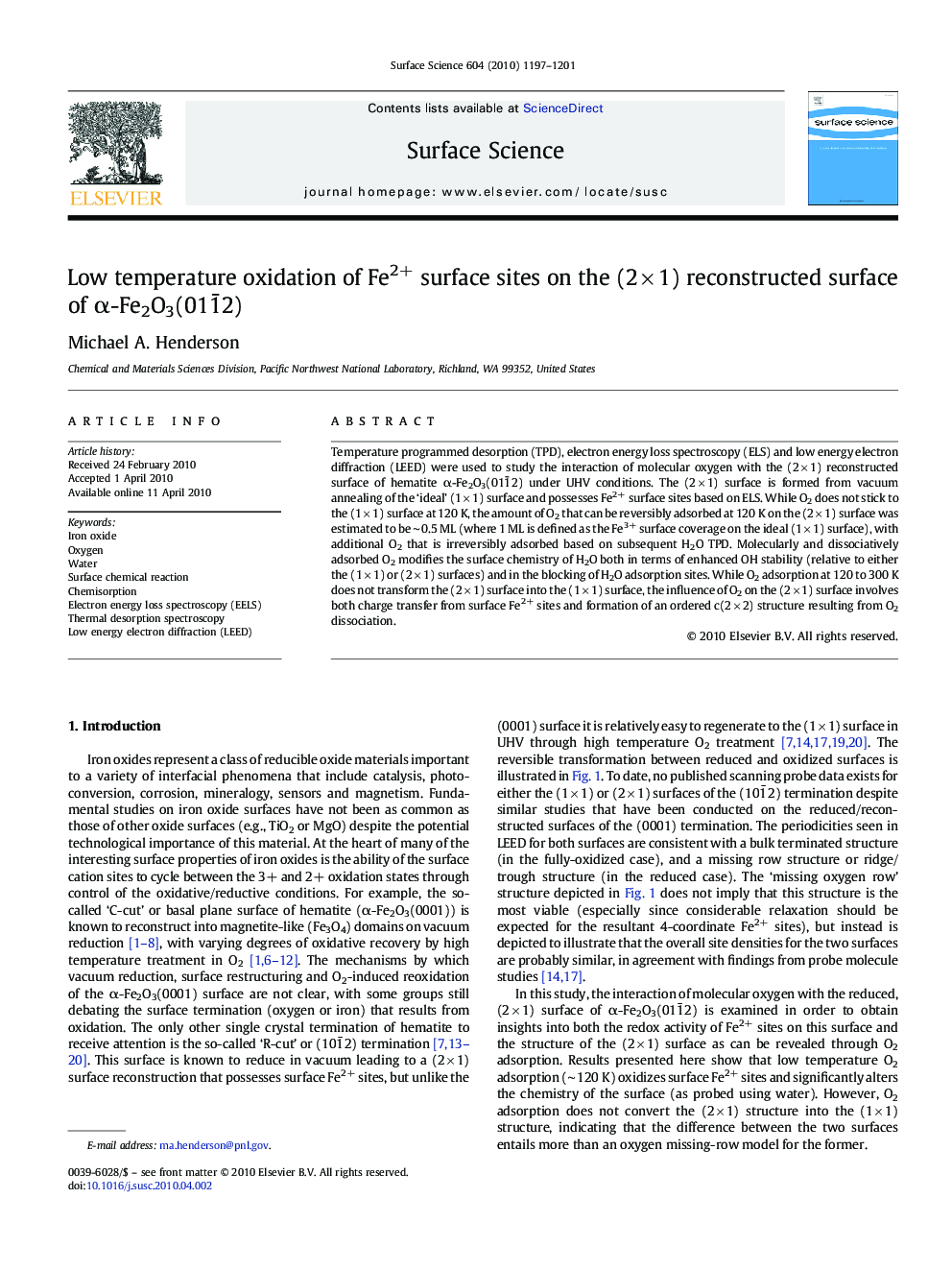| Article ID | Journal | Published Year | Pages | File Type |
|---|---|---|---|---|
| 5423171 | Surface Science | 2010 | 5 Pages |
Abstract
Temperature programmed desorption (TPD), electron energy loss spectroscopy (ELS) and low energy electron diffraction (LEED) were used to study the interaction of molecular oxygen with the (2 Ã 1) reconstructed surface of hematite α-Fe2O3(011Â2) under UHV conditions. The (2 Ã 1) surface is formed from vacuum annealing of the 'ideal' (1 Ã 1) surface and possesses Fe2+ surface sites based on ELS. While O2 does not stick to the (1 Ã 1) surface at 120 K, the amount of O2 that can be reversibly adsorbed at 120 K on the (2 Ã 1) surface was estimated to be â¼Â 0.5 ML (where 1 ML is defined as the Fe3+ surface coverage on the ideal (1 Ã 1) surface), with additional O2 that is irreversibly adsorbed based on subsequent H2O TPD. Molecularly and dissociatively adsorbed O2 modifies the surface chemistry of H2O both in terms of enhanced OH stability (relative to either the (1 Ã 1) or (2 Ã 1) surfaces) and in the blocking of H2O adsorption sites. While O2 adsorption at 120 to 300 K does not transform the (2 Ã 1) surface into the (1 Ã 1) surface, the influence of O2 on the (2 Ã 1) surface involves both charge transfer from surface Fe2+ sites and formation of an ordered c(2 Ã 2) structure resulting from O2 dissociation.
Keywords
Related Topics
Physical Sciences and Engineering
Chemistry
Physical and Theoretical Chemistry
Authors
Michael A. Henderson,
